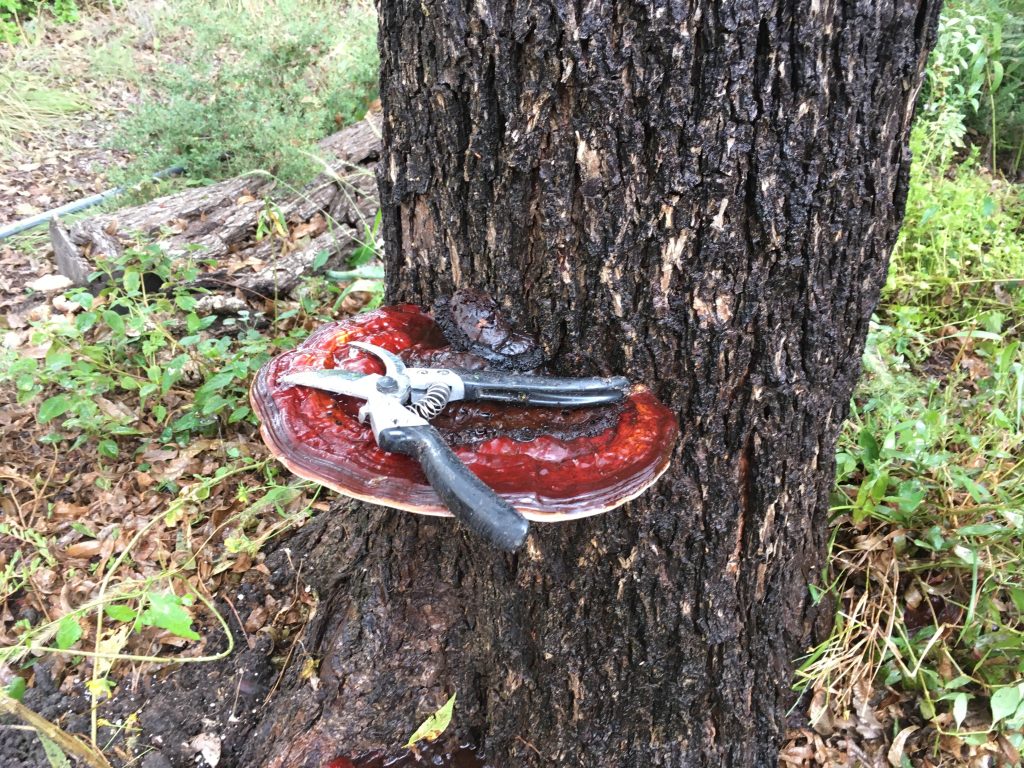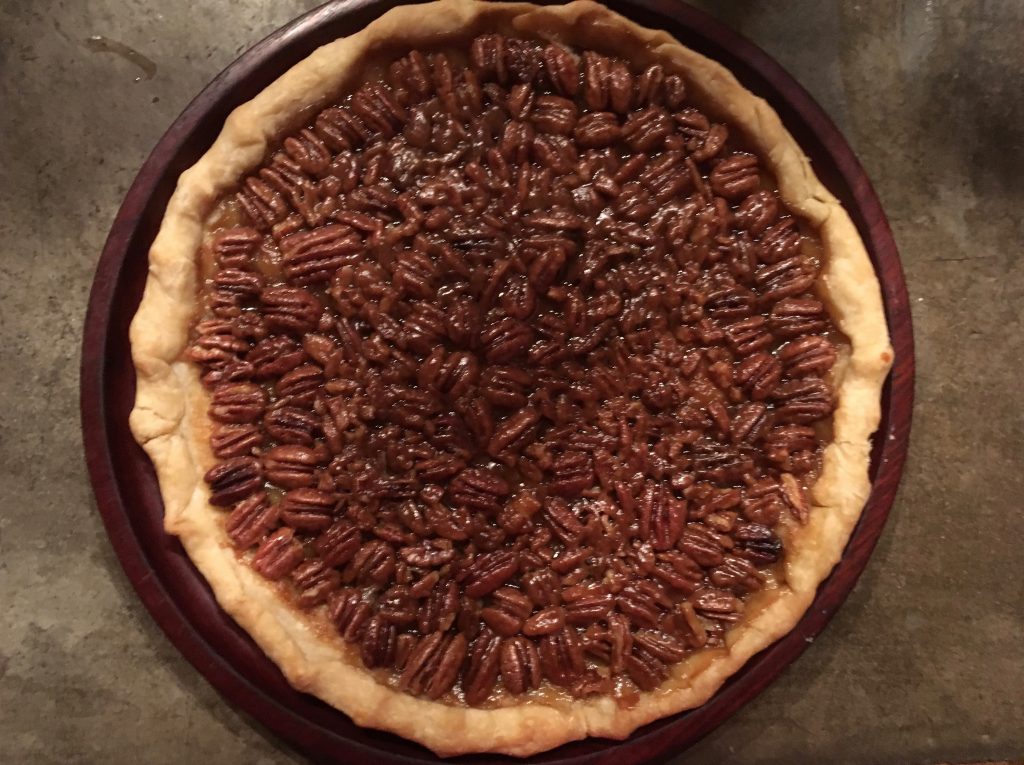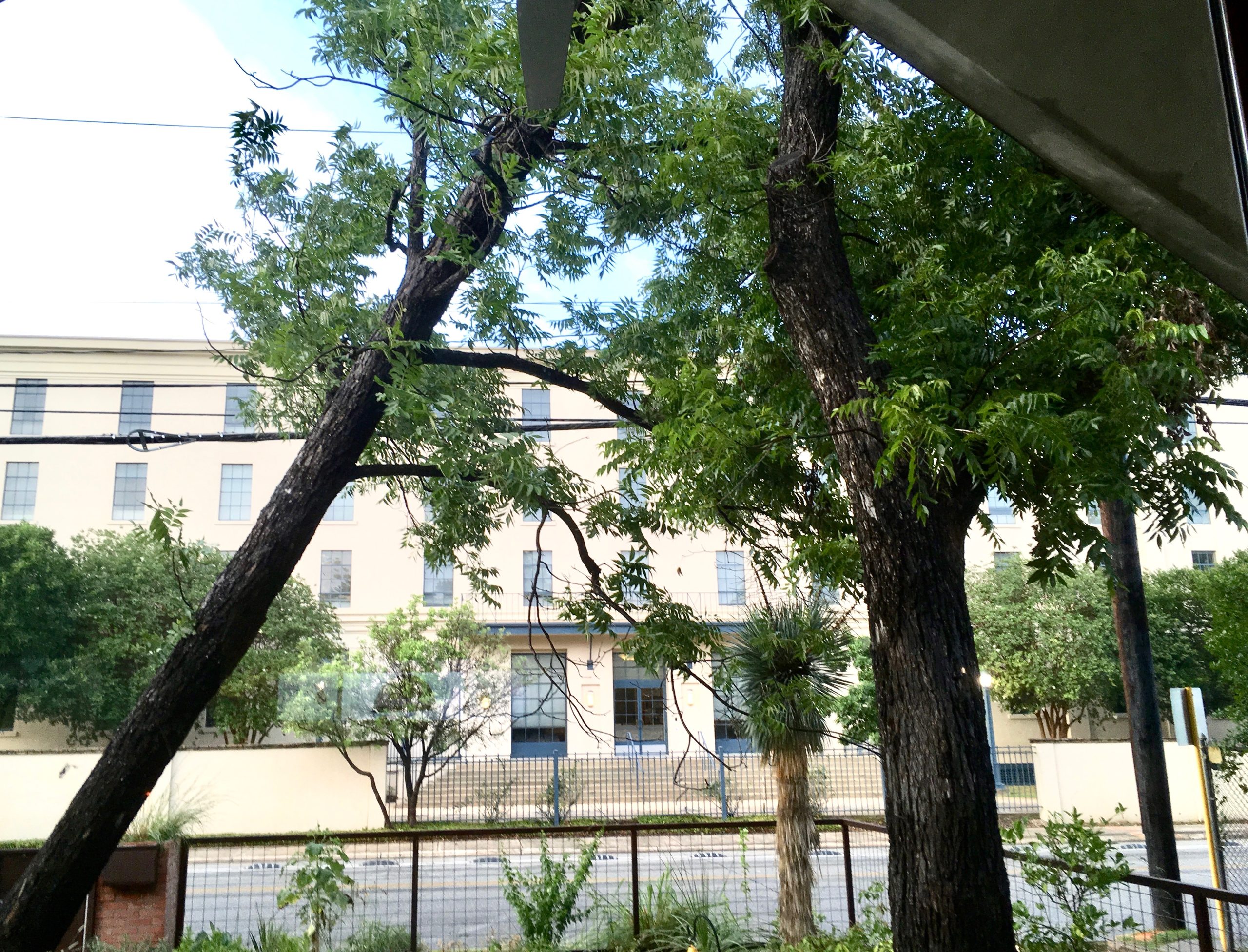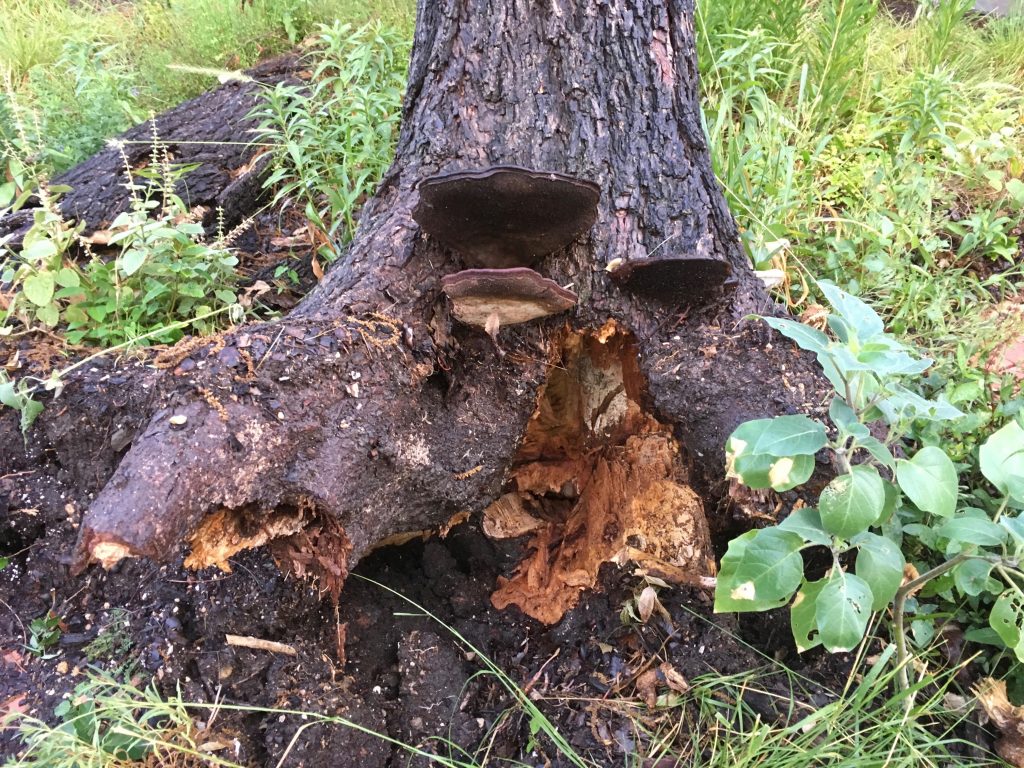I can’t recall another Saturday morning that began with sawdust in my coffee. That was the salute and send-off for one of our favorite pecans trees, a 42-year-old that fell to the gales of Tuesday night’s storm.

The squirrels will miss the gnarly pecan’s handy rest stop. Photo by Monika Maeckle
The gnarly example of Carya illinoinensis had taken some hits in its short life. For most of four decades, it thrived mostly unattended in an empty lot a block from the river in downtown San Antonio. It endured wind, freezes, drenching and drought.
In recent years a four-year construction project likely contributed to its demise, opening a wound where bark rot took hold. The strange looking fungus attacked the lean, straight tree, producing large dark brown mushroom bracts that jutted sideways from its bark like so many convenient shelves. When gardening I would often lay my pruning shears on the handy natural shelf. Squirrels found the fungi ledges an ideal sitting spot, a well-placed bench to rest or enjoy a pecan from the tree’s regular alternate year crops.

Where are my pruning shears? Photo by Monika Maeckle
Many evenings our family sat on the front porch and enjoyed the squirrels chasing each other across the yard. In the spring, they pounced from limb to limb in a courtship chase as mockingbirds tweeted their aggressive evening calls and titmice jockeyed for spots on the bird feeder. Not only did the squirrels use the gnarly pecan as a midpoint rest stop, its location in the middle of the yard made for a common place to jump.
The entrance to our home accommodated this tree with a u-shaped detour around its young, broad trunk. Family and visitors respected it by walking around it. We all enjoyed its shade and oily autumn fruits, marveled at its mushroom shelves and appreciated its yellow tassels in the spring. The annoying yellow catkins, the male flowers of the pecan, litter the sidewalk but their messy appearance assures future fruits.

Gnarly pecan tart is a holiday tradition at our house. Creme fraiche optional. Photo by Monika Maeckle
Each fall, we gather dozens of pounds of nuts from the gnarly pecan and its siblings in our yard and along the river. Pecan tarts and a special snack mix follow shortly thereafter.
Last Tuesday’s storm put an end to the gnarly pecan. Around 7 PM after the winds died down, I looked out the front window and noticed the tree had tree tipped at a 45-degree angle across the yard. It had uprooted, tipped east and was thankfully caught by its sister tree, a gesture

View of Tuesday night’s storm damage. Photo by Monika Maeckle
that likely prevented the crash of a nearby power pole in its path. The gnarly tree’s rotted roots were exposed to the sidewalk, making the destruction of the last few years obvious. Fungus had been composting the dead matter from its inside out, undermining its health and ultimately causing its death.

Bark rot, root rot and high winds were the downfall of the gnarly pecan. Photo by Monika Maeckle
It took several days to locate a certified arborist to tackle the aftermath. Tree people were busy in the wake of the storm. But Saturday morning, Darling and Miguel of Tree Musketeers arrived with their chainsaws, ropes and extension saws to harvest the wood and restore order to the yard.
We watched as the tree climbers expertly tied ropes and pullies around the healthy limbs of the sister tree to catch falling branches of the fatally injured pecan. No gutters were damaged, no power lines downed. Over three hours, the tree team dissected the gnarly pecan. Limb by limb, they extricated it from its sister’s arms, brought it gently to the ground, then sliced its 18-inch trunk into hefty logs for firewood. A few select chunks will become treasured sitting stumps on the porch.
Rest in peace, gnarly pecan. We appreciate your service.
Like what you’re reading? Follow butterfly and native plant news at the Texas Butterfly Ranch. Sign up for email delivery, like us on Facebook, or follow us on Twitter, @monikam.
Related posts:
- Resilience required: climate change turns up heat in the butterfly garden
- Milkweed Shortage Sparks “Alternative Fuels” for Monarch Butterflies
- Texas Butterfly Ranch Milkweed Guide
- Will the Monarch Migration Become Extinct?
- How to Get Native Milkweed Seeds to Germinate
- Persnickety Texas milkweeds, May Not Lend Themselves to Mass Production
- Tropical Milkweed: To Plant it or Not is No Simple Question
- Desperately seeking Milkweed: Be sure to buy pesticide free plants
- Butterfly FAQ: Is it OK to Move a Chrysalis? Yes, and here’s how to do it
- How to Make Seedballs
- Converting your Lawn to a Butterfly Garden

if its not to late you could get hold of a woodturning club there & have them turn some things out of it. They would turn things in exchange!
Great idea!
Such a lovely tribute, Monika!
If you have not already, you should go to dirtdoctor.com and read his sick tree treatment. He is not a native plant person but he definitely knows and is a leader in organic gardening. More people need to know about the sick tree treatment. I loved your tribute to your tree that has been a part of your family’s lives.